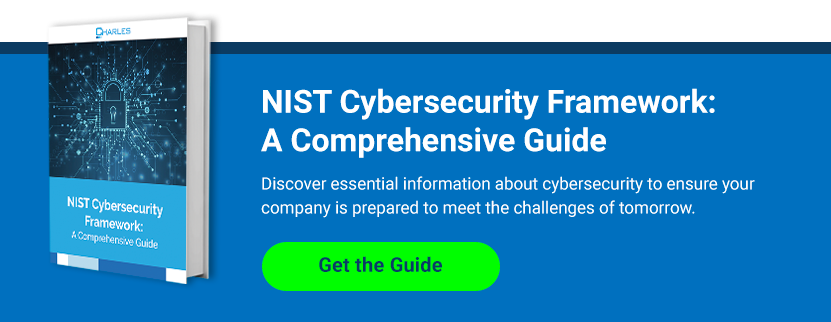Facing a rapidly evolving threat landscape, more and more organizations are using the NIST Cybersecurity Framework to guide them through the best practices for risk management. The overarching goal of the framework is to establish a common language across the cybersecurity sector, which has long suffered from being highly fragmented.
The framework was originally established with critical infrastructure in mind. Organizations in sectors like healthcare, finance, and defense, then started adapting it as they established the foundations for more advanced cybersecurity maturity. It has since become a global standard for proactive risk management.
NIST CSF compliance does not have to be as expensive or complicated to implement as many business leaders assume. With the help of the right technical partners, it can offer the ultimate protection for businesses of any size in any industry. A successful adoption is an investment in the future of your business in its own right, since it means appealing to high-value clients at a time when cybersecurity and risk management are top of mind.
Unifying business leadership and IT security
For many years, there has been a serious lack of alignment between the needs of business leaders and the demands of cybersecurity. To that end, cybersecurity teams found themselves operating in bubbles, while security leaders were viewed as those who said no to innovation.
The NIST CSF seeks to improve the relationship between business and cybersecurity and to empower today’s security leaders to become better communicators. This is why it focusses a lot on risk management – something that traditionalist business leaders understand very well.
Why cybersecurity must be managed proactively
Every security leader wants the best when it comes to protecting the assets in their care, but there is a caveat with focusing excessively on preventing threats. It fails to consider what they need to do if an incident does occur.
The assumption should change from if and incident happens to when an incident will happen. In other words, business leaders need to expect the worst and be prepared for it. The NIST CSF deals with the entire incident lifecycle from identifying threats to disaster recovery.
What is NIST Cybersecurity Framework compliance?
NIST Cybersecurity Framework compliance is not a legal mandate or a compliance regulation, but rather a document outlining the best practices organizations should adopt. However, since it serves as the basis for many government- and industry-mandated compliance regimes, it is the obvious place to start your compliance journey with regulations like HIPAA and FISMA.
Introducing the NIST framework core competencies
The NIST Cybersecurity Framework is divided into five main function areas – Identify, Protect, Detect, Respond, and Recover. Under each function area, there is a list of desired outcomes. For example, the Identify function area covers asset management and risk assessment. This function area lays the groundwork for achieving compliance.
Whereas many frameworks focus only on security measures, the NIST framework addresses the entire incident lifecycle, including what to do in the event of a successful attack. As such, it helps organizations prepare for practically any eventuality.
Essential solutions for achieving NIST compliance
Many large enterprises have fully staffed in-house IT security teams. Smaller businesses lack access to such financial and human resources, but that does not mean they cannot also enjoy the same level of protection. Instead, SMBs can overcome these challenges by working with the right technical partners, such as security consultants and managed security services firms.
Every organization should start with a gap assessment to evaluate their existing cybersecurity posture and identify areas in need of improvement. Common, unified solutions include a fully managed and outsourced security incident and event management (SIEM) platform, managed detection and response (MDR), and regular security awareness training.
Above all, business leaders should approach cybersecurity as a constantly evolving journey, rather than a destination. After all, the only constant in the space is change. The NIST CSF lays the foundations for protecting your business, but maintaining compliance is an ongoing thing that revolves around continuous improvement or, in other words, constantly striving to be one step ahead of malicious actors.
Charles IT is your technology and compliance expert. We lend a guiding hand to help to ensure your business is ready to tackle tomorrow’s challenges, along with a range of fully managed solutions to bolster your defenses. Get in touch today to find out more!




